Picture this: Your content team just delivered what appears to be the definitive guide to your industry. The copy is polished, the research is thorough and the design is on-brand. You approve it for publication, confident that this piece will drive the organic traffic and lead generation your quarterly goals demand.
Fast forward three months. That strategic content investment is languishing on Page 3 of search results, and Google’s algorithm has apparently decided that your carefully planned content doesn’t quite meet the standards of the Page 1 SERP. Welcome to the marketing leader’s eternal struggle: the moment when content strategy meets algorithmic reality.
This is where AI reoptimization comes in — not as a replacement for good writing, but as a reality check for content that needs to evolve with search trends, user intent and the ever-changing digital landscape.
What Is AI Reoptimization (And Why Does Your Content Need It)?
AI reoptimization is the process of using artificial intelligence to analyze your existing content and suggest improvements based on current search trends, competitor performance and ranking factors.
Think of it as having a really smart editor who never sleeps, doesn’t drink coffee and actually enjoys reading through your entire content library to find optimization opportunities.
Unlike traditional content audits that rely on manual analysis and subjective assessments, AI reoptimization uses data-driven insights to identify specific areas for improvement. It can spot keyword gaps your team missed, suggest content additions that could boost your rankings and help you understand why that high-priority piece your team produced is performing about as well as a premium product launch during a recession.
The reality is that content optimization isn’t a set-it-and-forget-it process — and for marketing leaders managing budgets and ROI expectations, this presents both a challenge and an opportunity. Search behaviors change, new competitors enter your space and Google’s algorithm updates arrive with the frequency and predictability of quarterly budget revisions. What worked six months ago might be completely irrelevant today, which means your content investments need ongoing optimization to maintain their value.
Our Own AI Reoptimization Journey: A Case Study in Strategic Humility
At Brafton, we practice what we preach and put our own content through the AI reoptimization process on a regular basis.
Let me walk you through the process, using one of my older blog posts as an example. For our little experiment, I chose this multilingual content marketing blog post — a piece I researched extensively — to see what insights we could uncover. Spoiler alert: even content marketing agencies have optimization blind spots.
Step 1: Defining the Optimization Target
The first step in any AI reoptimization process is getting crystal clear about what you’re trying to achieve.
- Are you targeting a specific keyword?
- Trying to improve for a particular search intent?
- Or just hoping to boost overall visibility?
Brafton’s own platform, contentmarketing.ai, actually takes some of that work off your plate. For our multilingual content marketing post, I started by identifying the main topic I wanted to optimize for.
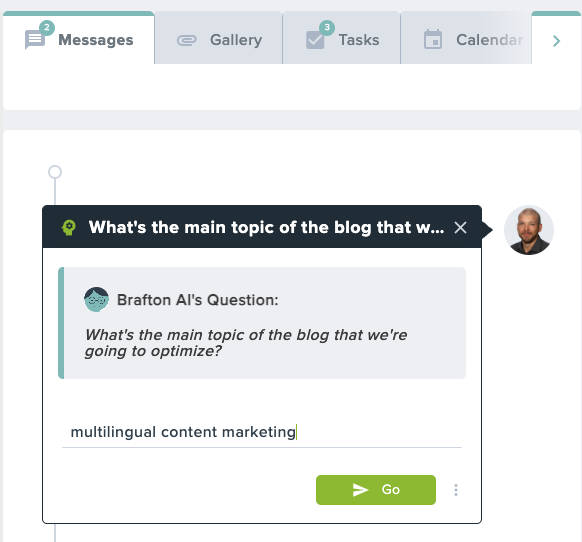
The AI tool prompted me to specify my focus, and I confirmed that “multilingual content marketing” was indeed my primary target. This might seem obvious, but you’d be surprised how many optimization efforts fail because teams aren’t aligned on the actual goal.
Careful, though. Your main topic isn’t always equal to your target keyword. We’ll get to that.
Step 2: Establishing Brand Context
Next, you’ll want to ensure your content is still in line with your branding, tone of voice and overall content strategy. Sometimes, those can change, so it’s worth using this opportunity to update your copy accordingly.
In this case, I don’t have to worry about it, because our tool allows me to select a suitable Brand Brief.
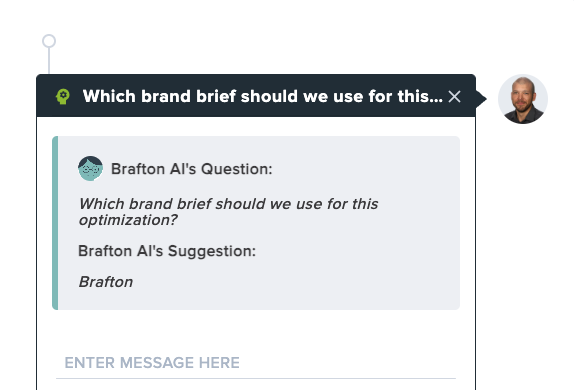
These are built within the platform itself ahead of time so that all content can reference the appropriate Brand Brief. Other tools may store this information in certain branding settings, but if you solely rely on an AI model like Claude or ChatGPT, just know that you need to add this manually, as part of your prompt.
So, back to our reoptimization.
I selected the Brafton Brand Brief, which helps ensure that any suggested changes would maintain our established brand guidelines and messaging framework.
This step prevents the awkward situation where your optimized content sounds like it came from a completely different company, just because your engineer wrote it — a concern that’s particularly important for marketing leaders managing brand consistency across multiple content initiatives while trying to account for E-E-A-T.
Step 3: Content Input and Analysis
Alright. Time to look at the damage and analyze the current copy of your blog post or landing page.
This is a good point to remind yourself of what you’re looking for. While it’s important to keep the bots happy with technical factors like keyword density and proper formatting, that’s just the surface.
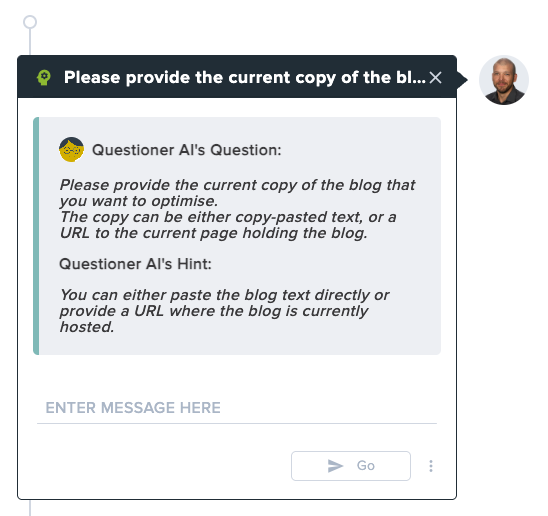
You can either paste the text directly or provide a URL to the existing content. I went with the direct paste approach.
This is also where the AI begins its detective work, analyzing not just what you’ve written, but how it compares to the current competitive landscape for your target keywords.
Step 4: Keyword Strategy Refinement
Now, the optimization process gets strategically interesting. The AI asked about my intended target Google SERPs keyword — essentially, what specific search term I want to rank well for. While I had defined “multilingual content marketing” as a broad topic in step one, this step is about getting laser-focused on what people are actually searching for.
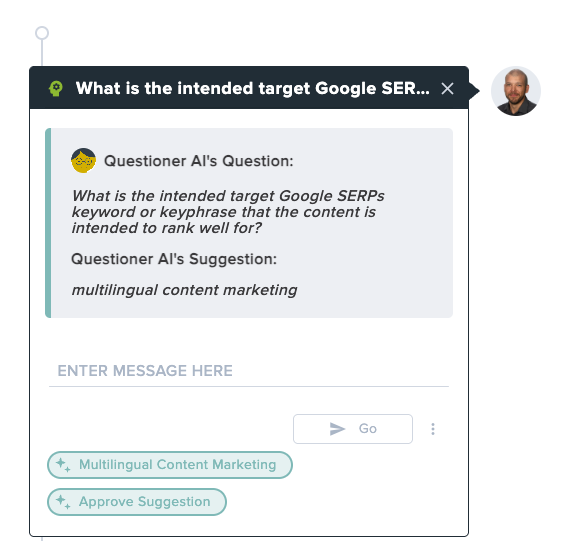
This distinction is crucial for marketing teams. You might start with a strategic content topic like “customer retention strategies” but discover that your audience is actually searching for “how to reduce customer churn” or “customer loyalty programs.” It’s the difference between what sounds good in a content calendar and what drives actual organic traffic.
I could just confirm “multilingual content marketing” as my target, with the platform analyzing related terms and variations that could impact my optimization strategy. But I can also take it a step further and manually add a list of keywords from a tool like Clearscope. This can be helpful if you want to have even more insight into competitive research data or tweak the keywords a little, maybe to exclude references to competitors’ products.
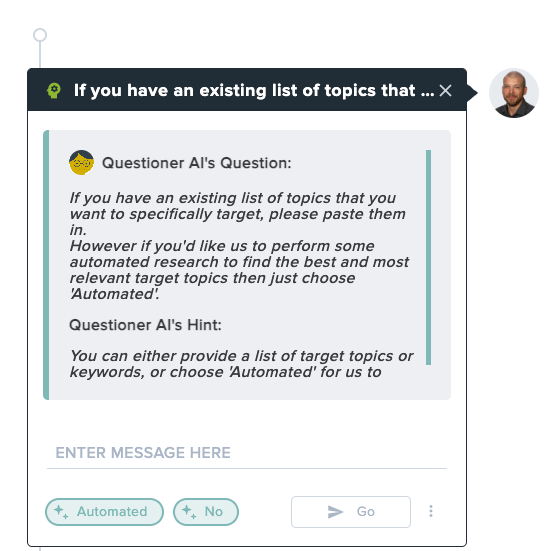
The AI doesn’t just look at your primary keyword; it examines the entire semantic landscape around your topic — providing competitive intelligence that would require significant manual research time for your team to gather independently.
Step 5: Topic Research and Expansion
This is where AI reoptimization really delivers ROI for marketing teams. While your content creators excel at producing engaging, valuable content, they’re not always equipped to identify every possible angle or subtopic that could strengthen SEO performance.
The AI can spot patterns in top-performing content that might not be immediately obvious — saving your team hours of competitive research while uncovering opportunities that could significantly impact your search visibility.
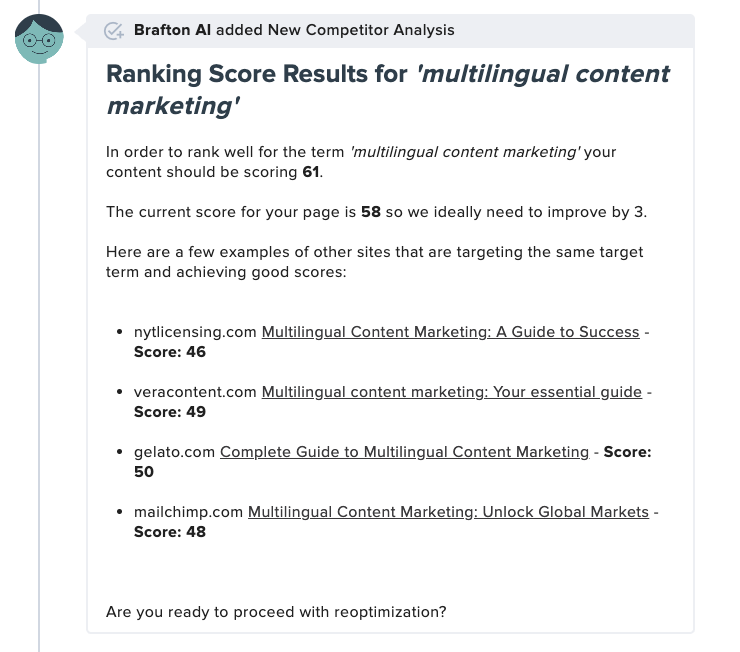
The Moment of Truth: Our Ranking Score Analysis
After all the setup, the AI delivered its verdict on my multilingual content marketing post. The results were … educational.
According to the analysis, to rank well for “multilingual content marketing,” the content should be scoring 61 out of 100. Its current score? A humble 58. So close, yet so far, considering it’s not even an old blog post. The platform recommended improving the score by 3 points — which sounds small until you realize that those 3 points could be the difference between Page 1 and Page 2 in search results.
The AI also provided specific examples of competing content that was outperforming ours.
Interestingly, none of these competing pieces had scores above 50, yet they were still outperforming our content in search results. This highlights a crucial point: SEO success isn’t just about having the highest optimization score — although my inner child feels taken back to afternoons of endless bliss trying to crack my brother’s Tetris high score.
Fun and educating as those scores can be, they’re just an initial indicator. And that means, your team still needs to check if competitors actually did provide content more relevant than yours.
No matter what tool you use, it’s worth understanding what went into edits, what the AI platform changed and whether those changes align with your strategic goals and branding. I wouldn’t recommend doing this as part of the production workflow itself, but rather use separate tools like DiffChecker.
So, let’s see where the bot did well, where it missed the point and where I’m too vain to accept it improved my copy.
First, it added this section to my intro:
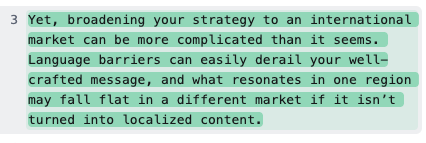
Now, I will say, the bot is right. However, at Brafton, we usually try to keep our intros short to pull the reader in. So I wouldn’t want to expand on my already lengthy speech on Spanish teachers and move that info elsewhere. And given that it’s a fairly abstract statement, I’d also ensure it doesn’t repeat too often across the piece.
While we’ve designed our platform to avoid this issue, repetition of broad statements throughout longer pieces is a known issue with AI content in general, so I just do this out of habit. Once a reader has grasped the point, they either want hard data supporting that point or a pun. Repeating the same argument will only annoy them.
What else?
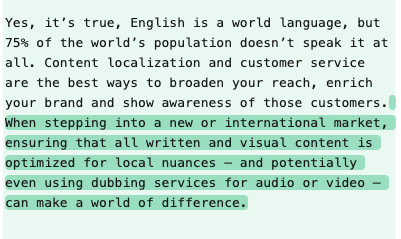
Nice work, Botty! Here’s a quantum cookie for your circuits. I actually hadn’t covered dubbing, and considering the increasing opportunities in automated translation and video generation, it’s worth mentioning it — but maybe not four times, as you suggest.
Keep them coming, Botty. What else did I miss?

OK, as a native speaker of German, I couldn’t agree more. But here’s the thing. This sentence, while accurate, is highly related to personal human knowledge and experience. Those local partners will know why not to use “Du” to address a banker in his 50s, at least not during the first encounter.
But unless you dig deeper, AI won’t include those examples on its own, because it doesn’t have a life, and it never sat in on a meeting at Deutsche Bank.
So this is where the production team comes in, makes a judgment call whether top-level information adds meaningful context or whether it could even lead to further research. Brafton’s platform, for instance, would allow you to use a subject matter expert interview workflow, which you could then use to inform a separate article about German bankers’ quirks, should that be interesting to your audience.
As you can see, an AI workflow can take a lot of work off your plate and even automate some, but it doesn’t free you from applying critical thinking. Try to understand what exactly your tool is trying to achieve and what information is relying on to achieve that goal. If you didn’t provide any branding guidelines, there’s no reason to get upset because the app’s output was off-brand.
No matter which tool you use and how excited you are about time savings, keep reminding yourself that you’re still in charge and that “AI did it” won’t save you if a campaign didn’t work. It’s today’s version of “The dog ate my homework.”
Lessons I Learned From the contentmarketing.ai Reoptimization Experience
Going through this process with my content revealed several insights that are particularly relevant for marketing leaders:
- Your readers change; so should your strategy: When your team produces a blog post, it does so based on certain assumptions and research that were part of the initial creation process. In the meantime, Google might prefer different formats, users might have moved on to different problems or a new trend might change the angle your piece should take.
- Competitive intelligence is critical: The AI analysis showed us that we didn’t need to achieve some mythical perfect optimization score — we just needed to outperform a few specific competitors. This makes resource allocation more strategic and goals more achievable.
- Incremental improvements drive results: A 3-point improvement might seem minimal, but in competitive markets, those small gains can translate to significant visibility and traffic improvements that impact your bottom line.
- Data-driven decisions beat assumptions: Maybe you just want to give your strongest sales landing page a little push. Maybe you know your subject matter expert drafted a solid blog post, but he doesn’t know anything about SEO. There are many reasons why you’d want to double-check your content performance, so it’s worth establishing regular routines.
AI reoptimization tools like contentmarketing.ai help bridge the gap between creative content strategy and data-driven performance optimization. They don’t replace your team’s expertise and strategic thinking; they enhance it by providing competitive intelligence and insights that would require significant manual research to gather.
For marketing leaders, this means spending less budget on guesswork and more on implementing changes that are backed by competitive analysis and search data. It’s the difference between hoping your content strategy will work and having data-driven confidence in your optimization decisions.
Ready To Optimize Your Content Strategy?
If our experience has taught us anything, it’s that even content marketing agencies can benefit from objective, data-driven analysis of their strategic content investments. The AI reoptimization process revealed opportunities our team hadn’t considered and provided a clear roadmap for improving our competitive position.
Whether you’re managing content that’s underperforming against KPIs, trying to maintain market-leading rankings in a competitive space or evaluating the ROI of your current content investments, AI reoptimization can provide the competitive intelligence you need to make strategic decisions.
Ready to see how your content strategy measures up against the competition? contentmarketing.ai offers a free trial that lets you analyze your own content using the same process we used. You might discover that your content is closer to optimization success than you thought, or you might uncover opportunities that could significantly impact your search performance and lead generation.
Either way, you’ll have the data-driven insights needed to optimize your content strategy and demonstrate measurable ROI — which is infinitely more valuable than hoping your content investments will pay off and crossing your fingers every time your team hits “publish.”






